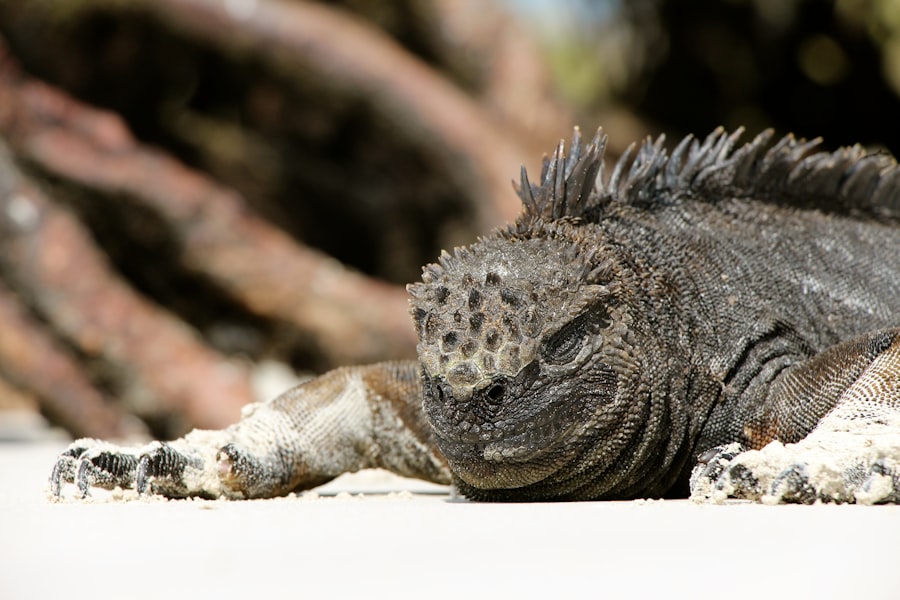When you think of Kaiju, the colossal monsters that have roamed the screens of Japanese cinema and television, you are stepping into a world that has captivated audiences for decades. Originating from the Japanese word for “strange beast,” Kaiju have become synonymous with the Tokusatsu genre, which is characterized by its use of special effects and elaborate costumes. You may recall iconic figures like Godzilla, Mothra, and Gamera, each representing not just a creature but a cultural phenomenon that has shaped the landscape of entertainment.
The allure of these gigantic beings lies not only in their size and power but also in the stories they tell—stories that resonate with themes of humanity, nature, and the consequences of our actions. In Tokusatsu TV, Kaiju serve as both antagonists and symbols, often reflecting societal fears and aspirations. As you delve deeper into this genre, you will discover how these monsters have evolved over time, adapting to the changing tastes and concerns of audiences.
The blend of action, drama, and moral lessons embedded in these narratives creates a rich tapestry that invites viewers to engage with the material on multiple levels. Whether you are a long-time fan or a newcomer to the world of Kaiju, understanding their role in Tokusatsu TV is essential to appreciating the genre’s depth and significance.
Key Takeaways
- Kaiju are giant monsters featured in Tokusatsu TV, a genre of Japanese live-action television and film known for its special effects and action sequences.
- The evolution of Kaiju in Tokusatsu TV has seen a shift from traditional rubber suits to more advanced CGI and animatronics, allowing for more realistic and dynamic monster battles.
- Kaiju have had a significant influence on the storytelling in Tokusatsu TV, often serving as allegories for real-world issues and providing a platform for exploring themes of environmentalism, technology, and societal fears.
- Special effects play a crucial role in bringing Kaiju to life in Tokusatsu TV, with techniques such as miniatures, pyrotechnics, and wire work used to create the illusion of massive destruction and epic battles.
- Kaiju have had a lasting cultural impact in Tokusatsu TV, inspiring a dedicated fanbase, influencing pop culture, and spawning a wide range of merchandise including toys, video games, and collectibles.
Evolution of Kaiju in Tokusatsu TV
The evolution of Kaiju in Tokusatsu TV is a fascinating journey that mirrors technological advancements and shifts in cultural attitudes. Initially, these monsters were portrayed through practical effects, with actors donning elaborate costumes to bring them to life. You can imagine the creativity and ingenuity required to create these larger-than-life characters using limited resources.
The original Godzilla film in 1954 set the stage for this genre, introducing audiences to a creature born from nuclear fears—a reflection of post-war anxieties that resonated deeply with the Japanese public. As time progressed, so did the portrayal of Kaiju. The introduction of more sophisticated special effects techniques allowed for more dynamic storytelling.
You might notice how the 1970s and 1980s saw a shift towards more colorful and fantastical designs, with monsters like Gigan and Mechagodzilla capturing the imagination of viewers. This era also marked the rise of television series featuring Kaiju, such as “Ultraman,” which expanded the narrative possibilities by incorporating episodic storytelling. The evolution of Kaiju is not just about visual changes; it also reflects a growing complexity in character development and thematic exploration.
Influence of Kaiju on Tokusatsu TV storytelling

Kaiju have significantly influenced storytelling within Tokusatsu TV, serving as catalysts for conflict and moral dilemmas. When you watch these shows, you will often find that the presence of a Kaiju forces characters to confront their fears, make difficult choices, and ultimately grow as individuals. This narrative device allows for rich character arcs that resonate with viewers on a personal level.
For instance, in many series, the protagonist must grapple with their own humanity while facing off against these monstrous beings, creating a compelling juxtaposition between man and monster. Moreover, Kaiju often embody societal issues, acting as metaphors for environmental destruction, war, or technological advancement. You may notice how certain monsters are designed to reflect contemporary concerns—Godzilla’s origins tied to nuclear power serve as a poignant reminder of humanity’s impact on nature.
This thematic depth elevates the stories beyond mere entertainment; they become cautionary tales that encourage reflection and dialogue among viewers. As you engage with these narratives, you will find that the influence of Kaiju extends far beyond their physical presence on screen.
Kaiju and special effects in Tokusatsu TV
| TV Show | Kaiju | Special Effects |
|---|---|---|
| Ultraman | Various monsters | Miniature sets and pyrotechnics |
| Godzilla: The Series | Godzilla, other monsters | CGI and animatronics |
| Kamen Rider | Monster of the week | Wirework and practical effects |
The relationship between Kaiju and special effects in Tokusatsu TV is a cornerstone of the genre’s appeal. From the early days of suitmation—where actors donned heavy costumes to portray these massive creatures—to modern CGI techniques, the evolution of special effects has allowed for increasingly imaginative portrayals of Kaiju. You can appreciate how each era brought its own innovations, pushing the boundaries of what was possible in visual storytelling.
The tactile nature of practical effects often lends a unique charm to older films, while contemporary CGI offers a level of detail and fluidity that can create breathtaking sequences. As you explore various Tokusatsu series, you will notice how special effects are not merely tools for spectacle; they are integral to storytelling. The way a Kaiju moves, roars, or interacts with its environment can convey emotions and intentions that dialogue alone cannot express.
For instance, the destruction caused by a rampaging monster can symbolize chaos or loss, while moments of vulnerability can humanize these creatures in unexpected ways. The artistry behind special effects enhances your viewing experience, allowing you to immerse yourself fully in the world of Kaiju.
Kaiju and cultural impact in Tokusatsu TV
The cultural impact of Kaiju in Tokusatsu TV is profound and far-reaching. These monsters have transcended their roles as mere entertainment; they have become cultural icons that represent various aspects of Japanese identity. You may find that Kaiju often embody national sentiments—Godzilla’s emergence during Japan’s post-war reconstruction period resonated with themes of resilience and rebirth.
As you engage with these narratives, you will see how they reflect collective fears and hopes, making them relevant across generations. Furthermore, Kaiju have influenced not only Japanese culture but also global perceptions of Japan itself. The popularity of these monsters has led to international collaborations and adaptations, showcasing their universal appeal.
You might recall how Hollywood has attempted to capture the essence of Kaiju through films like “Pacific Rim” or the recent “Godzilla” series. This cross-cultural exchange highlights how Kaiju have become symbols of creativity and innovation, bridging gaps between different cultures while maintaining their unique roots.
Kaiju and the global appeal of Tokusatsu TV

The global appeal of Tokusatsu TV featuring Kaiju is a testament to the genre’s ability to resonate with diverse audiences. As you explore this phenomenon, you will discover that fans from various backgrounds are drawn to the spectacle and emotional depth these stories offer. The universal themes of good versus evil, humanity’s struggle against nature, and personal growth are relatable across cultures.
This broad appeal has led to a dedicated fanbase that spans continents, fostering communities where enthusiasts share their love for these iconic monsters. Moreover, the rise of streaming platforms has made it easier than ever for international audiences to access Tokusatsu content. You may find yourself binge-watching classic series or discovering new titles that showcase innovative interpretations of Kaiju lore.
This accessibility has sparked renewed interest in the genre, leading to conventions, fan art, and even academic discussions surrounding its significance. As you engage with this global community, you will realize that Kaiju are not just monsters; they are cultural ambassadors that invite you to explore new perspectives.
Kaiju and merchandise in Tokusatsu TV
The merchandising surrounding Kaiju in Tokusatsu TV is another fascinating aspect that highlights their cultural significance. From action figures to clothing lines, these monstrous characters have become lucrative icons that extend beyond the screen. You might find yourself drawn to collectible items that celebrate your favorite Kaiju or even discover unique merchandise that showcases artistic interpretations of these creatures.
This thriving market not only caters to fans but also serves as a means for creators to connect with their audience on a deeper level. Merchandise also plays a crucial role in keeping the legacy of Kaiju alive for future generations. As you explore various products—from model kits to video games—you will see how they contribute to the ongoing narrative surrounding these characters.
Fans often engage with merchandise as a way to express their passion for the genre while also participating in its evolution. This symbiotic relationship between media and merchandise ensures that Kaiju remain relevant in popular culture, inviting new fans to join the ranks while celebrating those who have loved them for years.
The future of Kaiju in Tokusatsu TV
As you look toward the future of Kaiju in Tokusatsu TV, it becomes clear that this genre is poised for continued growth and innovation. With advancements in technology and storytelling techniques, creators are exploring new ways to bring these iconic monsters to life. You may anticipate seeing more diverse representations of Kaiju that reflect contemporary issues while maintaining the core themes that have defined them for decades.
This evolution promises to keep audiences engaged while inviting fresh perspectives into the fold. Moreover, as global interest in Tokusatsu continues to rise, collaborations between Japanese creators and international filmmakers may lead to exciting new projects that expand the reach of Kaiju narratives. You might find yourself witnessing cross-cultural adaptations or original stories that pay homage to traditional elements while introducing innovative concepts.
The future holds endless possibilities for Kaiju in Tokusatsu TV—an ever-evolving landscape where creativity knows no bounds and where these magnificent creatures will continue to inspire awe for generations to come.
